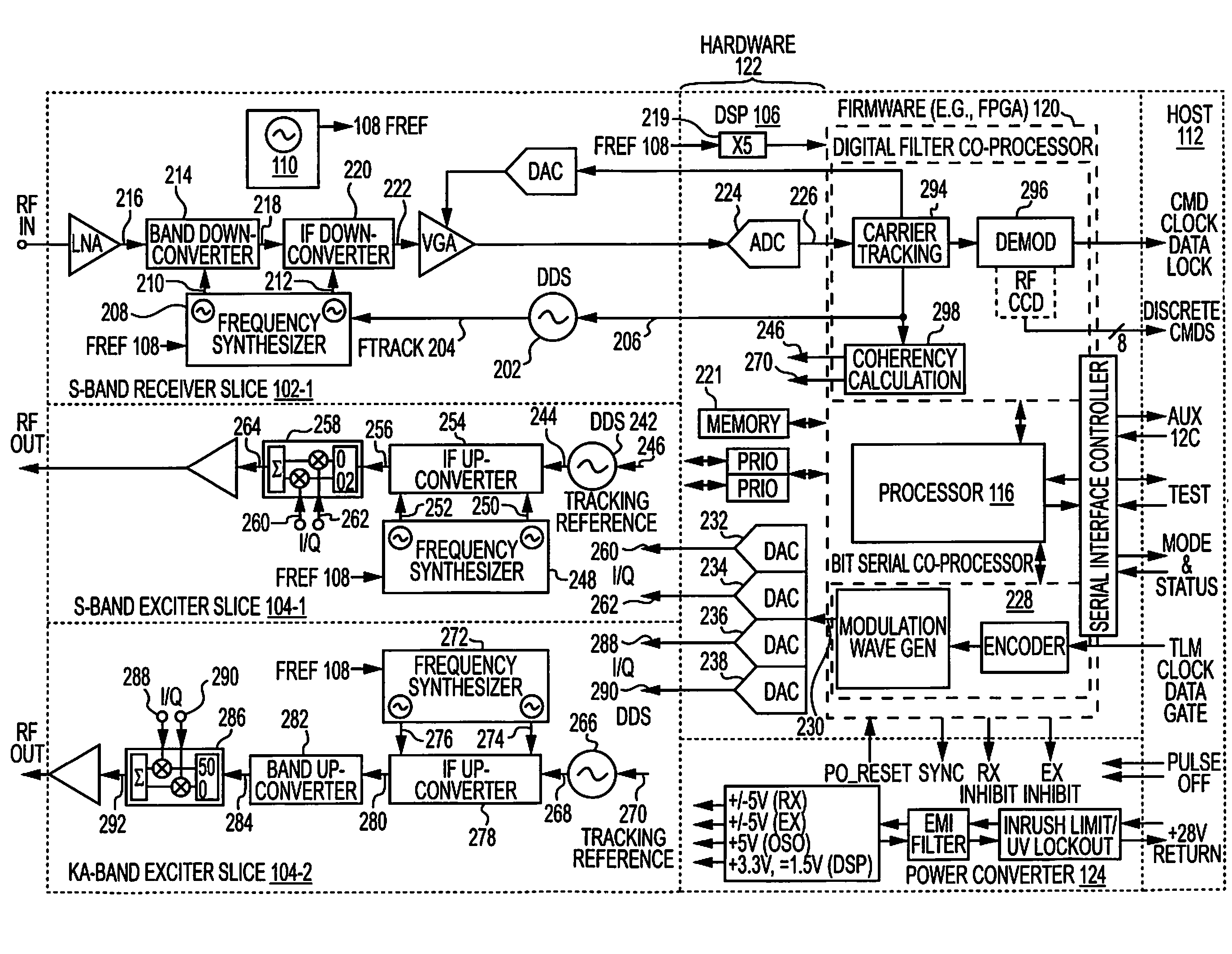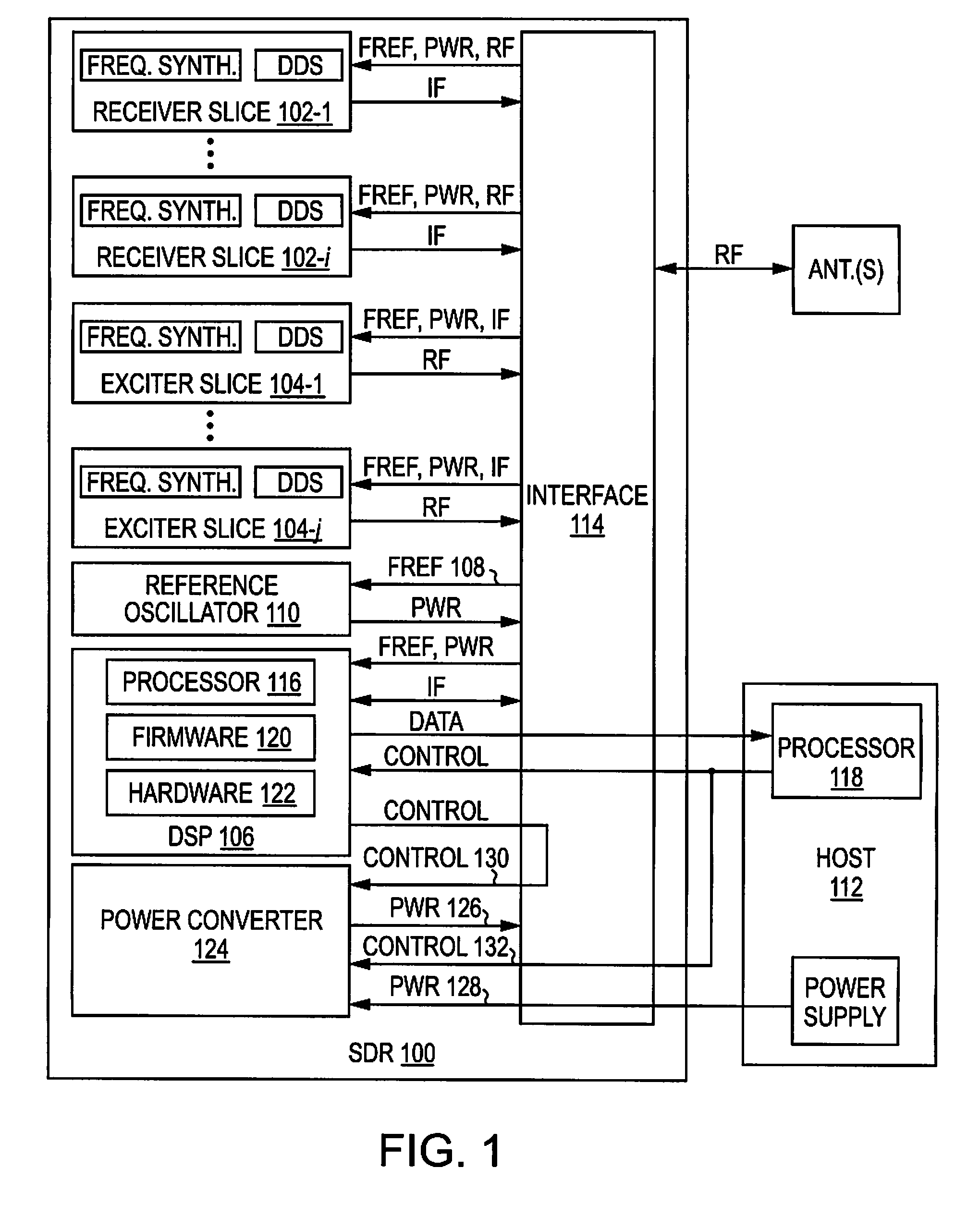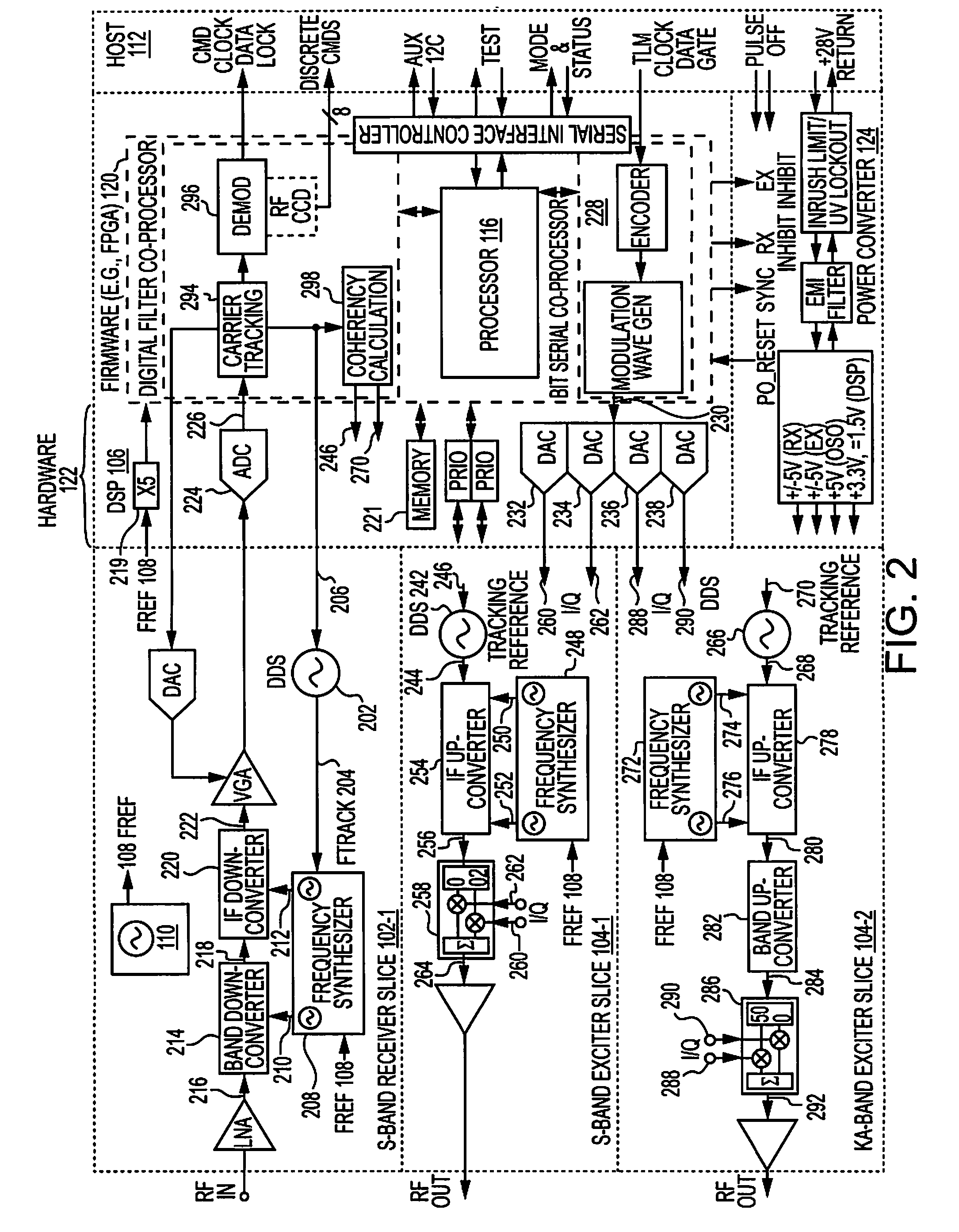Low Power, Low Mass, Modular, Multi-Band Software-Defined Radios
a software-defined radio and low-mass technology, applied in the direction of multi-frequency-changing modulation transference, resonant circuits using central processing units, instruments, etc., can solve the problems of size, mass and power consumption, and the designs developed for terrestrial applications are not necessarily suitable for extraterrestrial environments, and achieve low spurious, low noise, and additional precision.
- Summary
- Abstract
- Description
- Claims
- Application Information
AI Technical Summary
Benefits of technology
Problems solved by technology
Method used
Image
Examples
Embodiment Construction
[0002]This invention was made with U.S. Government support under the National Aeronautics and Space Administration (NASA), contract number NNXD06AH71G. The United States Government has certain rights in the invention.
BACKGROUND
[0003]1. Technical Field
[0004]Disclosed herein are methods and systems to implement and operate modular software-defined radios (SDRs), including SDRs for terrestrial and extraterrestrial use.
[0005]2. Related Art
[0006]Software-defined radios (SDRs) arose in the late 1970s in the defense sector. The term “software-defined radio” has been in use since at least 1991. An early U.S. military SDR initiative, named SpeakEasy, sought to use programmable processing to emulate multiple existing military radios operating in frequency bands between 2 and 2000 MHz, and to enable incorporation of new coding and modulation techniques in the future.
[0007]SDR development is driven predominantly by terrestrial needs, including military and emergency response needs, such as to p...
PUM
 Login to View More
Login to View More Abstract
Description
Claims
Application Information
 Login to View More
Login to View More - R&D
- Intellectual Property
- Life Sciences
- Materials
- Tech Scout
- Unparalleled Data Quality
- Higher Quality Content
- 60% Fewer Hallucinations
Browse by: Latest US Patents, China's latest patents, Technical Efficacy Thesaurus, Application Domain, Technology Topic, Popular Technical Reports.
© 2025 PatSnap. All rights reserved.Legal|Privacy policy|Modern Slavery Act Transparency Statement|Sitemap|About US| Contact US: help@patsnap.com



